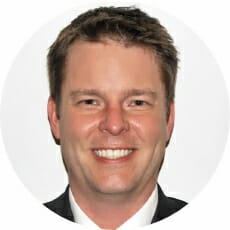
When it comes to addressing the mobility needs of individuals who rely on wheelchairs, there is an alarming gap in coverage that cannot be overlooked: medical insurance, car insurance, and Medicare do not typically cover the cost of wheelchair-accessible vehicles (WAVs). This lack of support, which many might find surprising, has significant implications for many people’s independence, freedom, and quality of life.

The crux of the medical insurance issue is the classification of wheelchair-accessible vehicles. These vital resources are not seen as ‘medical’; thus, their cost is not covered under standard medical insurance policies. This classification seems to gloss over the critical role these vehicles play in an individual’s health and well-being, serving as a conduit to medical appointments, physical therapy sessions, and even pharmacies for medication pickups. Unfortunately, this disconnect between the clear medical utility of WAVs and their recognition as such by insurance providers leaves policyholders without coverage for this essential tool.
Car insurance policies largely focus on accidents and liabilities and rarely extend them to cover the cost of special equipment or modifications like those found in wheelchair-accessible vehicles. At the same time, some car insurance policies might cover the cost of original equipment manufacturer (OEM) parts. Still, the modifications necessary to make a vehicle wheelchair-accessible go well beyond these standard parts. The absence of coverage for these necessary modifications underscores the insurance industry’s disconnect with the specific needs of the mobility-impaired population.
Medicare, the federal program that provides health coverage for people aged 65 or older or with certain disabilities, is also not a reliable solution for individuals needing a WAV. Medicare’s coverage philosophy centers on what it deems medically necessary, primarily within the confines of the home. The purchase of a wheelchair-accessible vehicle or the costs of converting a standard vehicle to a wheelchair-accessible typically fall outside these guidelines.
While Medicare Part B might cover the installation of auto equipment such as wheelchair lifts, hand controls, or driving aids under durable medical equipment (DME), this is contingent on specific conditions and does not extend to the significant costs associated with the vehicle or full conversion costs. While Medicare acknowledges the need for specialized mobility equipment, its reach is drastically limited regarding wheelchair-accessible vehicles.
The lack of coverage for WAVs from medical and car insurance, coupled with the limitations of Medicare, creates a challenging landscape for those reliant on these vehicles. It forces individuals to bear the substantial financial burden of acquiring a WAV or rely on public transportation, which is often less convenient and time-consuming.
While financial assistance programs, local resources, and non-profit organizations may offer some relief, they must provide a comprehensive solution. The limitations of insurance coverage and Medicare for wheelchair-accessible vehicles remain a significant barrier to mobility and independence for wheelchair users.
In a society striving for inclusivity and accessibility for all, this coverage gap is a stark reminder of how far we still have to go. Raising awareness about this issue is a critical first step toward broader policy and insurance reform that adequately addresses the mobility needs of all individuals.
If you have questions or want to discuss possible financial assistance & grant opportunities, don’t hesitate to contact a mobility consultant. Our team can work with you to determine what options might exist.
You can also review our links & resource page. Here we’ve compiled a list of helpful resources, organizations, and grant opportunities.

Richard Maxwell, is a seasoned automotive marketing executive with over two decades of experience. Starting in 1999 with his advertising agency, Maxx Design & Marketing, he has consistently delivered innovative marketing solutions. After earning his MBA, Richard shifted focus to adaptive technology, serving as Marketing Manager for Superior Van & Mobility. Today, he leverages his expertise to promote and educate others about adaptive equipment in transportation and drive change in accessible mobility.